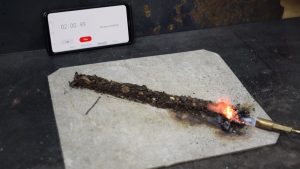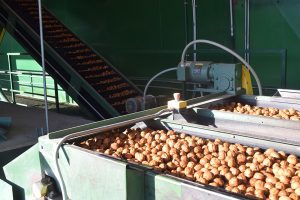![2-2-2 WALNUT HULLER HIGH QUALITY[2]](https://wcngg.com/wp-content/uploads/2023/08/2-2-2-WALNUT-HULLER-HIGH-QUALITY2-696x522.jpeg)
Explosions and fires at agricultural facilities have long been an issue for various commodity processing plants. A quick google search of “Food Processing Explosions” will pull hundreds of articles over the past 25 years, detailing the impacts of processor dust reacting with catastrophic results. The same google search is littered with numerous examples of grain elevator explosions occurring throughout the Midwest and Southern regions of the U.S.
While most notable events typically occur at grain elevator facilities, other areas noted for potential explosion risk include flour production, spice processing and sugar processing.
With most of the risk being held by various dry processing commodities, would it make sense to include the wet process of walnut hulling as a potential avenue to create combustible dust? According to the National Fire Prevention Association (NFPA), walnut dust, and therefore hulling, is included in their stringent requirements. So how did this designation occur? Unfortunately, many commodities experienced blanket applicability to the NFPA standard as the process of hulling walnuts can generate smaller pieces of organic material and dust. Additionally, combustibility designations are made at the federal level by Department of Labor’s Occupational Safety and Health Association (OSHA). Facilities that handle or generate potentially combustible materials must abide by NFPA – Standard 654. With this designation, what are the requirements for facilities subject to the NFPA guidelines?


To summarize basic requirements, facilities must install expensive sprinkler systems, costing anywhere between $100,000 and, in some cases, over $1 million within the building. Fire detection monitors are also required in and around equipment. Facilities must also employ approved vacuum systems to collect accumulated dust. Employees will not be able to use air compressors to blow the dust off the ledges within the building as this creates a higher potential for combustible dust clouds moving throughout the facility. Employees in charge of dust control would need to be vigilant as dust accumulation on ledges or equipment surfaces exceeding 1/32 of an inch would be deemed non-compliant with control measures. The local government impact is felt when local Fire Marshalls refuse to approve building permits due to the combustibility designation made by OSHA. Additionally, many insurance providers have indicated that fire suppression and detection systems are necessary to insure the equipment in use.

For walnut hullers, Western Agricultural Processors Association (WAPA) stepped up to prove whether the organic material generated is actually combustible or even flammable for that matter. Partnering with USDA-ARS researchers in Las Cruces, N.M. and following NFPA Standard 652, walnut organic material was collected from six different sites located throughout the state of California. The researchers were able to sieve the material to 500 microns or less which the Standard 652 guidelines state is traditionally used to define dust. Once the material was filtered and formed into a 10-inch-long narrow pile, researchers applied a blow torch for a specified amount of time and observed whether the material burned along the length of the pile. The organic material glowed from the torch and smoldered for a short time but did not burn along length of the pile for the duration of the test, and thus, according to the Standard, should not be considered flammable or combustible. This research proved that organic material and dust collected from walnut hullers is not flammable, let alone combustible. With this information, researchers are writing out their findings to publish them for peer review.
While the process to get walnut dust removed from the official OSHA listing would take time lobbying the agency, WAPA has a short-term fix to assist with any county government trying to impose a sprinkler requirement. With these findings, WAPA has the tools to combat local governments should any decide to require expensive, and unnecessary, fire suppression and control systems at walnut hulling facilities.










